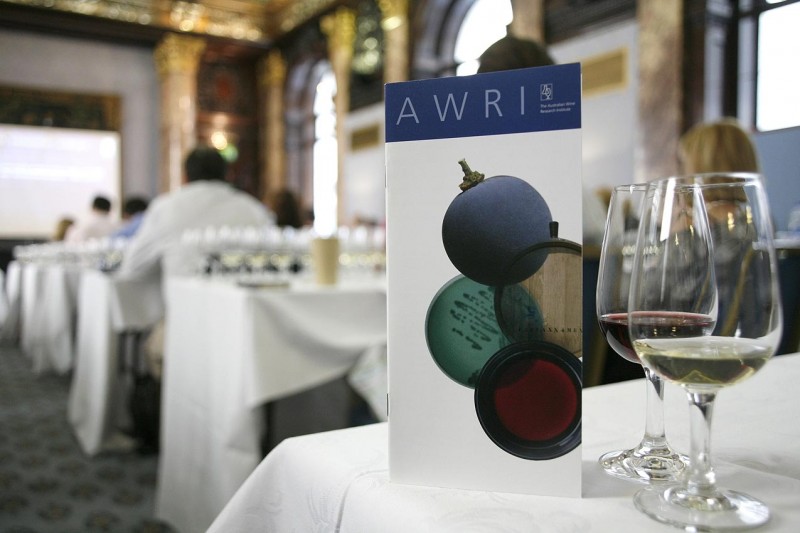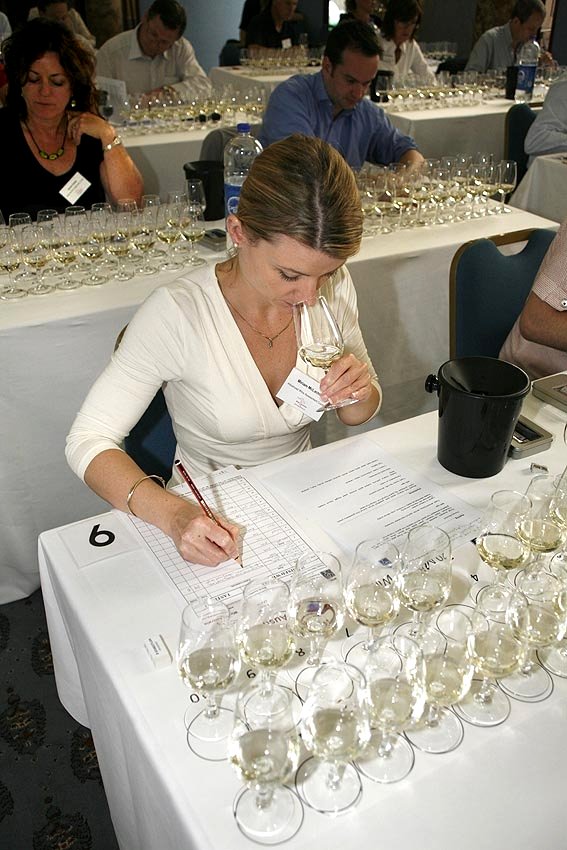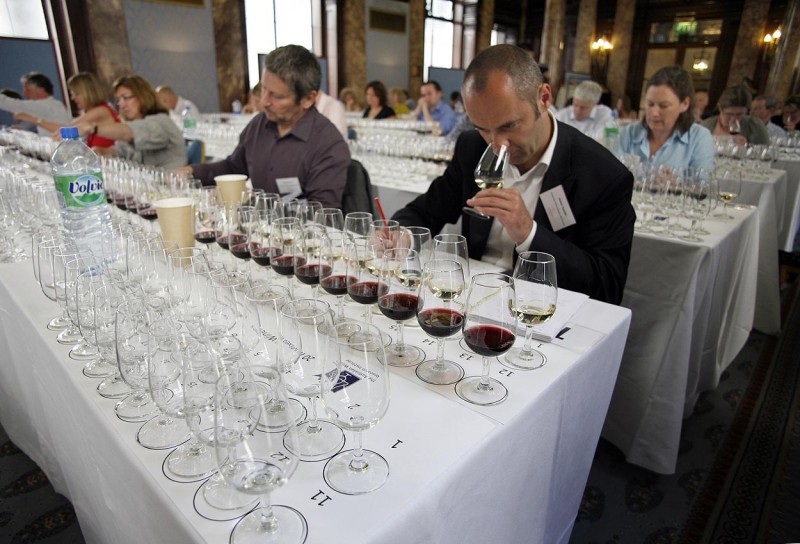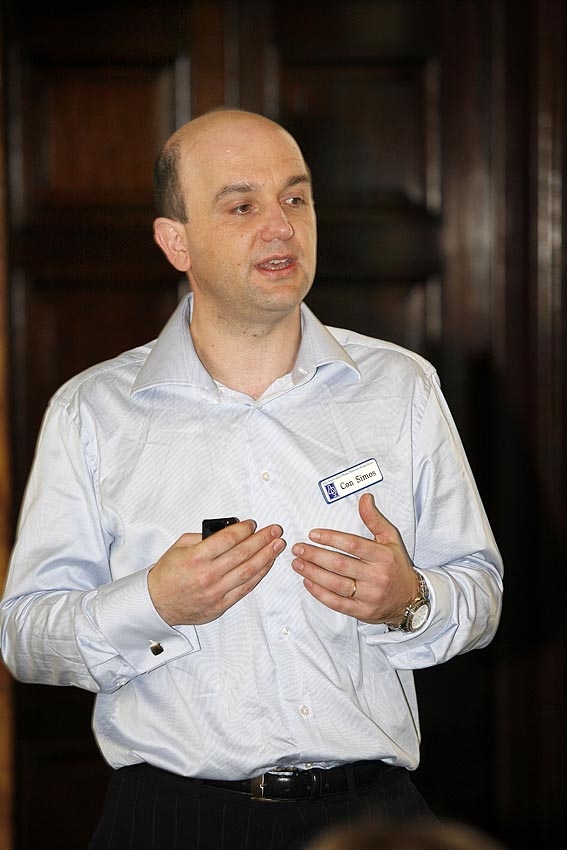Australia House, 29th June 2009
It’s always good to challenge yourself so I was keen to participate in the recent Wine Assessment Tasting, hosted by The Australian Wine Research Institute. Those attending included a mixture of journalists, wine educators, winemakers and trade, including Jancis Robinson MW, Anthony Rose, our own Richard Bampfield MW, Sarah-Jane Evans MW, new AWE member Natasha Hughes and AWE corporate members Michael Buriak and Anthony Moss (from WSET) and Peter Morgan (from Plumpton).
Continual Development
This was an event aimed at testing and possibly developing one’s own tasting skills and ability. Such opportunities are rare but I really believe in the need for continual development, however uncomfortable it may be to put yourself to the test yet again.
Trepidation
So with some trepidation, I welcomed this challenge; I had little idea of what to expect as information had been kept to a minimum except that I would be tested in some way on my tasting ability and some of it would involve identifying wine faults.
We all arrived promptly as if for an exam, and listened to an introduction by Con Simos, the course leader (pictured above). This one-day assessment was in fact based on a four-day training course usually held before the major Australian wine shows to prepare and assess judges.
Part 1 – fault identification
The first part involved fault analysis and we were presented with 22 red and white wines which we were told may or may not exhibit various faults.
Wines 1-11 were white, 12-22 red; wines 1 and 12 were the controls and only the last white wine (11) needed to be tasted, with the others to be assessed by nose alone. We then had to tick a box for each wine saying whether it was faulty and if so, what was the fault.
Sensitivity
We had to work fast. This bit I liked a lot because it simply involved nosing the wines and identifying what we smelled, along the way developing an awareness of our own sensitivity to different faults, for we all have different tolerances to various degrees of faults.
I remember being surprised the first time I heard that some people, including wine experts, cannot smell cork taint. They are what is called ‘anosmic’ to it . Even more prone to bring out the differences in people’s sensitivities is the wine fault Brettanomyces, which many people, especially consumers, seem to like in a wine and which is often scored highly in competitions. This is a subject much debated every year on my tasting panels at IWC as to what level is acceptable and what isn’t.
Chemical names
Anyway, this was an interesting first exercise, not least because we got to put a chemical name to those faults. For example, we learned that the ‘smoky, phenolic, medicinal’ nose on wine 2 was in fact due to guaiacol while the ‘chemical, plastic, mothballs, jasmine/flora’ descriptions of wine 3 were caused by indole.
A point I found interesting in an anoraky kind of way, was that the ‘corky/musty’ taint of wine 4 was 2, 4, 6–tribromoanisole (TBA) at 5 mg/l was very different to 2,4,6-trichloroanisole (TCA) also at 5mg/l which also had a description of musty, mouldy aromas. Both were powerful, obviously musty and faulty to me but unlike most of those I spoke to, I found my sensitivity to TCA was even stronger whereas most people found the TBA more intense.
Fascinating
Some other faults we were given examples of included mercaptan, 4-ethyl phenol (band-aid, brett character) acetic acid (vinegar), geosmin (earthy, nutty, musty smells), 4-ethyl catechol (described as horsey, smoky, bacon) among many others. For anyone interested in fine-tuning their own tasting ability, identifying which faults we are hypersensitive to, which we are just sensitive to and which we are more tolerant of is fascinating.
Part 2 – consistency
After a welcome break for coffee, we went back to the exam room and were presented with 20 mixed white wines. We were told nothing about them except that there were two different varieties, Chardonnay and Riesling, mixed in a random order. What we didn’t know at the time of tasting was that the wines were also repeated randomly within the flight to test us for consistency of marking.
We had to mark them out of 100 as if in a competition such as the International Wine Challenge, awarding gold, silver, bronze, or commended as we saw fit. We also asked to write a brief description of why we had given these marks. These wines had in fact been entered into the IWC in 2009 and some, whose identity would be revealed later, had been awarded medals.
We had to work quickly again and there was some time pressure but I managed to finish in time – just. Our marks were photocopied so we couldn’t change them and then we went through as a group with a show of hands saying what what we had awarded and why. We were then told what was actually awarded at the IWC.
After lunch the procedure was repeated with the reds.
Conclusion
So what did I learn? Well I was pleased to see that I was very consistent with my own marks for the repeated wines, especially the whites and slightly less so on the reds. Mostly I had awarded the same medals as the IWC with one or two exceptions. However in the afternoon, after lunch and as the number of wines tasted increased I was a bit more inconsistent.
Overall I feel it is a pity that there are so few opportunities for wine experts to refresh and develop their tasting skills, having attained qualifications such as the WSET Diploma and the Master of Wine.
Challenging
Although it is challenging and may be uncomfortable at times to put oneself through such an assessment, it encourages a refreshing kind of openess and humility in wine tasting that we could all do with more of. One of the great things about preparing for the Master of Wine practical exam was that, for me, it encouraged just that.
MOT
Exams aside, I think we should all have an annual ‘MOT’ on tasting so that we can become more aware of our strengths and weaknesses as tasters; not in order to pass or fail, but so that we can really develop our abilities more honestly. Perhaps then we wouldn’t feel embarrassed at being less sensitive to a particular smell or taste or hypersensitive to another. Increased self-awareness of our natural predispositions can only improve our tasting abilities in the long term.
I think this would be an excellent one-day course for anyone involved in tasting and I’m sure many of our AWE members would benefit from attending such an event. Let’s hope another one will be organised in the near future.
A very big thank you to Wines of Australia, AWRI and Lindsay May for organising this event. I found the whole day very stimulating, challenging and enjoyable.
© 2009 – 2012, Susan Hulme MW. All rights reserved.





